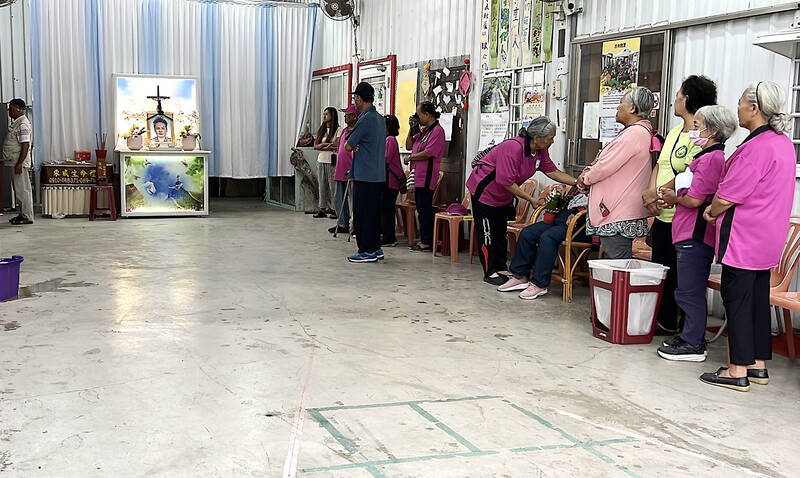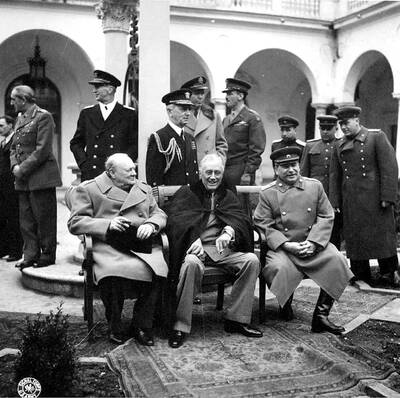The longstanding problem of social service provision in the mountains was thrown into sharp relief this month when cancer took Tjaikung Ruveljeng, a 58 year old doctor who had long pushed for a hospital on the southern link highway that runs between Fonggang Village (鳳岡) in Pingtung and Tawu Township (大武) in Taitung. Despite a decade of work, no hospital has been built on that 100 kilometer stretch of road, which has a largely indigenous population of 30,000. A Central News Agency (CNA) report said that lack of medical resources, which lead to tragic deaths on long trips to hospitals, inspired Tjaikung Ruveljeng.
Tjaikung Ruveljeng established the South Link Foundation in 2019 to lobby for a hospital in the area. At present the Foundation operates a clinic in Tawu township. The authorities felt that the nation lacked the medical resources to operate a full-blown hospital in the area, and argued that the new tunnel just outside Tawu had shortened medical transit times enough to negate the need for a local hospital. Hence, Tjaikung Ruveljeng never achieved his dream.
Because most media workers live in urban areas, the generally laudatory writing on the national health insurance (NHI) system largely misses its wildly uneven distribution of resources.

“The implementation of the NHI inadvertently contributed to further concentration of healthcare resources in large hospitals while weakening primary care,” observed a critical review of the NHI last year in the Journal of the Formosan Medical Association.
The same paper noted that the focus on hospitals as care centers “overburdened” the hospitals during the pandemic, and shifted care of chronic diseases to major hospitals instead of to more efficient primary care locations, which are more accessible to the elderly.
‘COVERAGE WITHOUT ACCESS’

Photo: CNA
Numerous scholars have written on the problem Tjaikung Ruveljeng faced: the urban-rural divide in health care resources, in many ways is an ethnic divide. A 2018 paper — “Is Taiwan’s National Health Insurance a perfect system? Problems related to health care utilization of the aboriginal population in rural townships” — on the rural-urban health care divide describes the problem of indigenous areas as “coverage without access.” Mountainous and rural areas populated by indigenous people have lower health outcomes. According to the study, Taiwan’s indigenous people had life expectancies in 2015 of 71.9 years, 8.3 years less than the national average of 80.2.
Moreover, indigenous in mountainous regions had even shorter life expectancies than those in non-mountainous regions. The maldistribution of resources in the NHI system, which follows the usual government practices of pushing debt onto the future, onto users and onto local institutions, manifests in this case as early deaths for indigenous people.
A piece published in June in the Journal of the Chinese Medical Association on the Veterans Hospital system observes that the high population densities in urban areas mean that medically underserved areas account for nearly 65 percent of Taiwan’s land area, but contain only 10.9 percent of its population. Locals in those areas rely on clinics, and accessing specialists such as surgeons and pediatricians, along with specialized diagnostic equipment, is difficult. Bed utilization is much lower in rural hospitals than in urban, in part because patients in need of specialized care must seek it in urban areas. Another negative outcome of the rural-urban divide is that elderly patients in rural areas have poorer adherence to medicine prescriptions and are less likely to get needed refills, according to a paper published last year in the International Journal of Clinical Practice that found the cause was not lower education levels, but location.
The paper from June noted that underserved areas as a whole host but one medical center, the largest and most broadly capable health care institution in Taiwan. All other medical centers are in urban areas, even when they have partnerships with rural clinics and health centers.
“Despite the fact that rural and mountainous townships lack medical facilities and health care providers in comparison with urban areas, the average number of hospital visits per person per year in rural regions is higher than that of the national average,” the 2018 paper cited above noted.
Ironically, even as rural areas remain underfunded, the government is pouring more resources into urban health centers. In response to the crowding of emergency rooms (caused in part by ward closures due to lack of funds and staff, see my “Taiwan’s health system is going to erode, not collapse”, May 5, 2025), the government is starting a pilot program for urban urgent care centers. These will operate mainly on Sundays or consecutive public holidays from 8am to midnight, offering basic health care, testing, minor surgery and pediatric services, Minister of Health and Welfare Shih Chung-liang (石崇良) told the media.
STRONGER REGULATIONS NEEDED
One reason the system operates this way is because there is no regulation or gatekeeping of health care services to prevent overuse. In the US, for example, in many cases patients cannot see a specialist without a referral from a general practice doctor. There was some discussion of that earlier in the policymaking for revisions to the NHI system a decade ago, but it was never implemented. The decline in primary care centers created by the NHI has bred the habit of going to the hospital for even small health problems, in turn driving the development of pilot urgent care centers.
The hospitals also encourage outpatient services because that is where the money is. As one review of the sustainability of the system pointed out last year, outpatient services account for 70 percent of expenditures, while in-patient services are just 30 percent. In the original system design, the authors argue, the reimbursement for inpatient services was set too low, meaning that hospitals cannot recover their costs for such services, and doctors avoid offering them. This also hurts the ability of hospitals in rural areas to offer more complex services.
It is symptomatic of the system’s problems that the South Link Foundation has responded to the lack of hospitals by shifting to a mobile healthcare model that emphasizes home care in the patient’s own home. Some form of this model will likely become dominant across rural areas.
Technology has long been treated as a panacea for labor shortages in every industry, but technology costs money. A July research piece in the Journal of the Formosan Medical Association on needed NHI reforms says that the “system is expected to function like a universal healthcare coverage model, while being fundamentally financed as an insurance-based program. Unlike tax-funded universal healthcare coverage systems, Taiwan’s NHI relies heavily on premiums.”
Yet, premiums remain absurdly low and the system suffers from overuse.
The elderly already account for 40 percent of health care expenditures, and chronic conditions are common among them. With its low premiums the NHI acts as a subsidy for the exact group of the people benefiting the most from Taiwan’s strange real estate-driven domestic economy: elderly urban real estate holders. The NHI’s resource distribution away from rural areas and towards wealthy urbanites, away from indigenous communities and towards Han Taiwanese, reflects the real-world distribution of wealth and power.
The time to tax all that accumulated real estate wealth, and to tax the wealthy to pay for the system, is now.
Notes from Central Taiwan is a column written by long-term resident Michael Turton, who provides incisive commentary informed by three decades of living in and writing about his adoptive country. The views expressed here are his own.

Using dating apps to find love is commonplace these days — and yet, for many singles, it has become a double-edged sword. The perks of having a never-ending supply of potential matches at your fingertips are obvious — but the appeal of connecting and meeting with strangers is time-limited. It can be especially frustrating to feel as if you’re stuck at the swiping stage. In 2023, US jeweler Shane Company found that the average American will spend about eight months using dating apps — swiping on around 3,960 profiles — before finding a partner. But for chronic daters, those numbers will

Well, it turns out I finally did live long enough to see everything. Last week Reuters reported on a statement from the American Institute in Taiwan (AIT), America’s officially unofficial representative office in Taipei, that “China intentionally mischaracterises World War II-era documents, including the Cairo Declaration, the Potsdam Proclamation and the Treaty of San Francisco, to try to support its coercive campaign to subjugate Taiwan.” Not only did Reuters forward this crushing rejection of the claims of the People’s Republic of China (PRC), it even correctly represented US policy on Taiwan’s status. The director of the Ma Ying-jeou Foundation, Hsiao

Sept. 29 to OCT. 5 With their compass broken, the small boat carrying 18 South Vietnamese refugees drifted at sea for more than a week, their rations running low. They had all but lost hope of reaching their destination of Manila when a Taiwanese fishing vessel spotted them and eventually brought them to Penghu. It was June 1981, six years after the fall of Saigon, and the group joined the millions who had fled the communist takeover of Vietnam. Taiwan was not a main destination for Vietnamese refugees, but more than 2,100 boat people arriving on 51 vessels passed

The iconic, brightly painted coastal sheds in and around Melbourne, Australia, are a quirky real estate mix: absolute beachfront views, but lacking basic features including a bedroom, bathroom, running water and even power. While they lack homely comforts, some can sell for more than an average Melbourne suburban house. And while the house comes with the security of land title, the shed is built on a public beach. Known variously as beach boxes, bathing boxes and boatsheds, these basic structures have been features of the Victoria state coastline along Port Phillip Bay and Western Port since the 19th century. What they have going